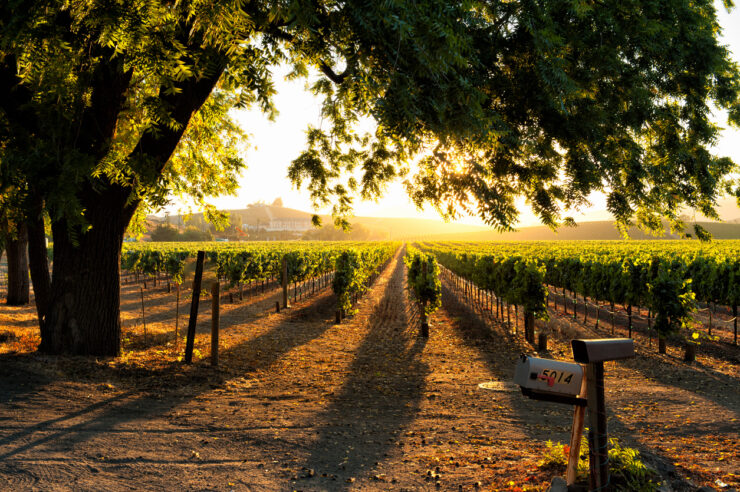Following a wine education trip to Sonoma, Calif., in late spring, I received three bottles of wine touted as “healthy” by one of the producers I met. The phrase “healthy wine” piqued my interest. I was curious to learn more about this current trend in the wine industry—wines that claim to be healthy for humans and the planet.
To dig into this topic, I purchased additional wines that claim health benefits at my local wine retailer. The goal was to taste these wines. My husband and I, along with a wine-savvy friend, tasted through the wines in one sitting. Our results are below. But first, a little background.
What Is Wine?
Like other fruits and vegetables, wine is an agricultural product. The grapes that go into wine reflect the farming and processing practices used to produce it. Just like the apples and lettuce we purchase at the grocery store, we have choices when deciding which wine to buy.
For example, do you want wine made from locally grown grapes? Wine that is organic and/or biodynamic? Imported or domestic? Mass-produced or artisanal? Or do you want the best price?
And importantly, how can we decipher this information from a wine label?
Deciphering Wine Labels
There can be way too much or not enough information on a wine label.
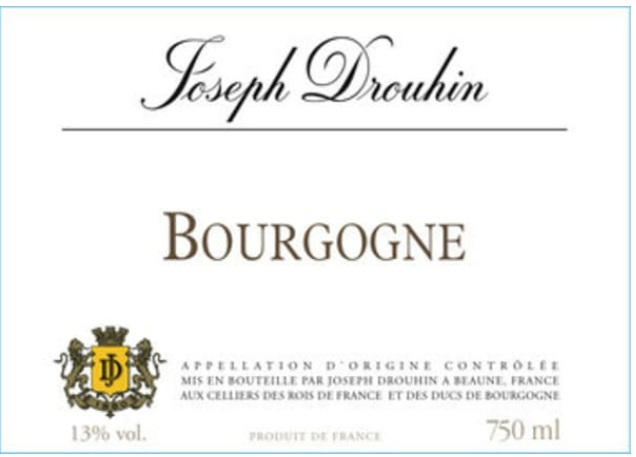
European wine labels often do not state the grape, just the region. Photo courtesy of Joseph Drouhin
First, wine label rules and regulations differ by country. Many European wines do not even disclose the grape variety on the label. “Joseph Drouhin Bourgogne” may be all you see. You need a bit of wine education to know that pretty much all white wine from Burgundy is Chardonnay. American wine labels usually provide the grape variety, as in “Ridge Estate Chardonnay.”
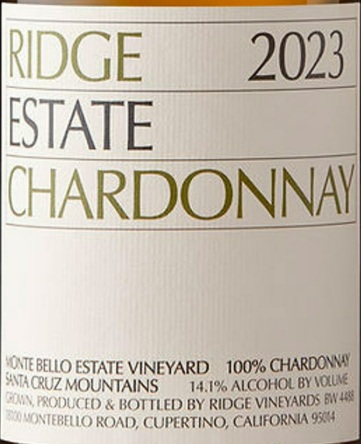
US wine labels generally provide the name of the grape on the label. Photo courtesy of Ridge Estate
Additionally, different words on the label regarding the grapes’ provenance can mean different things, depending on who’s using them. For this discussion, producers may use the following terms when advertising wines as “healthy.”
- Organic: According to the Oxford Companion to Wine (OCW), organic wine is made from grapes produced by organic viticulture and fermented according to the country of origin’s standards for organic winemaking. Frustratingly, these standards vary among countries, especially regarding the use of sulfites.
- Biodynamic: This is a practice for growing grapes that employs organic farming methods with additional soil supplements prepared according to specific formulas. The formulas are based on such things as the phases of the moon. To use the term “biodynamic” on a wine label, the wine must meet standards set by the Demeter Association. You may see “Demeter Certified” on a wine label.
- Sustainable/Regenerative: These terms have no official definition and can mean different things. Producers who use the terms may farm their grapes using methods such as little to no non-organic fertilizers, cover crops between the vines, and farm animals to help with weed mitigation and fertilization, thus creating a “closed loop” form of agriculture.
- Natural wine: Per OCW, this is an unregulated term used to describe wines made with organic grapes and no additives other than minimal sulfite additions.
- Zero Sugar, Zero Carbs: Be wary of such verbiage. Many still wines – red, white, and rosé – from around the world can claim this, if they are fermented to dryness. In these wines, the yeast consumes all the sugar, which is then converted to alcohol. Hence, they are designated as “dry wines,” and they contain few to no carbs. There are other wines, mostly mass-produced ones, that retain some residual sugar (RS); as a result, they are sweeter and higher in calories and carbs. Some producers add a sweetener to their wines, a common practice for sparkling wines.
- Zero Additives: More than 60 additives are allowed in wines produced in the US. These include things like flavor enhancers, dyes, yeast enhancers, and acid adjusters. Mass-produced wines tend to use more of these.
- Low Sulfites: Just about every wine in the world will have some sulfites. Sulfites are naturally present on the grapes when picked. Many producers add more sulfites to preserve the grapes during processing, usually in small amounts, but not always.
Know Your Wine
Sheila Donohue, owner of VeroVino Craft Wines, imports artisanal, mostly organic wines from Italy and Eastern Europe. She uses the term “processed wine” to refer to high-volume national brands that rely on consistent taste and appearance year to year. Such producers use various chemicals and additives to achieve this consistency.
“You really don’t know what you’re getting in the wine as the label does not disclose it,” says Donohue.
As a wine consumer, I prefer to know the details of the wine I drink. I want transparency. I want to know where the grapes are grown, and what the producer is doing to the grapes and to Mother Earth in the process of making the wine. But it takes time to research these things, and for the average consumer, that’s not an option.
The growing “healthy wine” trend in the US market has produced advertising campaigns that aim to make it easier for health-conscious consumers to make their choice.
Producers such as AVIVO, Aveline, FitVine, and LYBL have advertising messages that speak directly to the health issue. FitVine offers “delicious wines without the compromise” using “no unnecessary ingredients.” Aveline invites you to “pour with confidence” with 100% organic grapes, full transparency, and less than 1 gram of sugar. AVIVO offers “simply better wines for you and your planet.” Then there is LYBL, which stands for “Live Your Best Life,” and lists the calories per glass on the front label.
But Do They Taste Good?
Along with the three bottles of AVIVO wine I received from the producer, I purchased wines that advertise as healthy at my local Total Wine store, including those from Avaline, FitVine, and LYBL. The goal was to determine if healthy wines are also good wines. The following provides more information on each of these wines and our thoughts on what we experienced.
AVIVO, Bringing Organic Wine to the Masses
Established in 2016 by Ridgely Evers and Daniel Fitzgerald, AVIVO’s stated mission is to preserve the planet and the people who inhabit it.
Evers, owner of DaVero Farms and Winery, began making wine in 1990. He was a tech entrepreneur who created QuickBooks, among other things. Concurrently with his long career in Silicon Valley, Evers had his hands in the dirt at the farmland he purchased in Healdsburg, Calif., in 1982. He initially grew olive trees from cuttings he imported from Lucca, Italy. Only after drinking a glass of Paolo Bea Sagrantino di Montefalco, a Tuscan red wine, did Evers decide to plant wine grapes, focusing on Italian varieties.
Evers purchased additional acreage in Healdsburg. He revitalized the nutritionally depleted, chemically farmed land using biodynamic practices and planted the Italian varieties, including his beloved Sagrantino. DaVero now makes more than 10 wines, all farmed using regenerative, biodynamic, and organic practices.

Evers and his winemaker, Daniel Fitzgerald, started AVIVO to bring organic wines to the masses. The wines are produced using the same principles as at DaVero, but are priced under $25 per bottle. AVIVO offers just three wines: a red, a white, and a rosé.
Right off the bat, it’s clear that AVIVO is aiming toward health-conscious consumers. All three wines’ labels state that there is zero sugar, zero carbs, no additives, and low sulfites. The calorie count is 102 per 5-ounce pour.
The grapes for AVIVO wines are sourced from specific blocks of the Ledbetter vineyards in California’s Lodi AVA. The varieties and farming methods are to AVIVO’s exact standards, and meet requirements for organic, biodynamic, and regenerative certification. Winemaking is low-intervention, and no unnecessary ingredients are added to the wines.
AVIVO says its regenerative farming practices allow it to curb its carbon emissions. It packages the wines in lighter-weight glass bottles. They also use Nomacorc Ocean corks made from recycled ocean-bound plastic to reduce marine plastic waste.
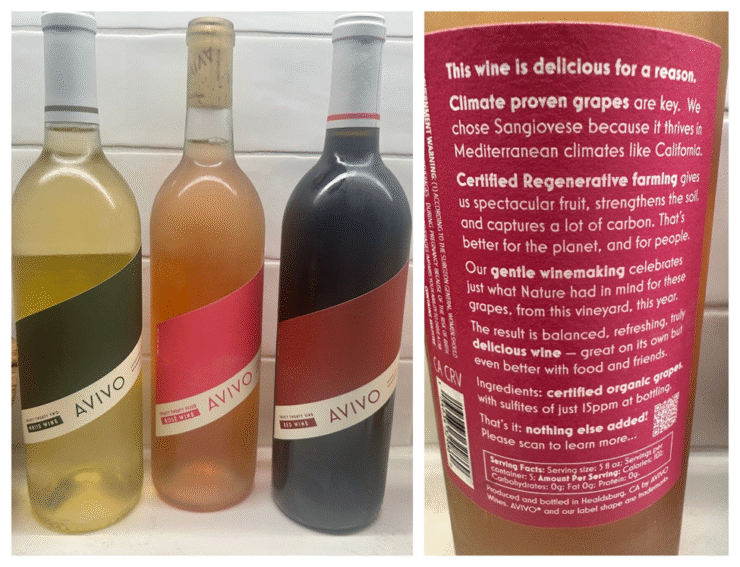
Tasting AVIVO
AVIVO White is 100 percent Vermentino, an Italian variety. It has notes of apples, grass, cucumber, and peaches. This white wine has a nice complexity and a medium finish – the taste lingered on our tongues for a while. We considered this a typical Vermentino, and it was delicious.
The AVIVO Rosé is 100 percent Sangiovese, a red variety native to Tuscany. It has notes of citrus fruit, strawberry, peach, and cantaloupe, with a touch of salinity. It is a delicate, refined, and refreshing wine.
The AVIVO Red, a blend of mostly Sangiovese with a touch of Syrah, is elegant on both the nose and palate. It has complex notes of red cherries, cranberries, spices, red roses, and a tang of saltiness. The wine lingered on the palate for quite a while and was a delightfully complex, lighter-bodied red.
Overall, AVIVO wines are well-made, with elegance, complexity, and finesse on both the nose and the palate. Of all the wines tasted, AVIVO wines stood out. The wines are available directly from the winery and at select retail stores.
Says Evers of his wines, “There’s no other sub-$30 domestic brand like AVIVO.”
He notes that the varieties are suited to California’s Mediterranean climate, so they have reliably balanced fruit. The Ledbetter family grows the grapes in their certified organic, biodynamic, and regenerative vineyards in Lodi. The wines are made entirely without manipulation, with just a touch of added sulfite. Consumers can scan a universal product code on the bottle for additional information about the wine.
Aveline, Where Transparency Rules
Hollywood actress Cameron Diaz and friend Katherine Power created the Aveline brand with the notion to put organic wine on everyone’s table. They emphasize ingredient transparency, including low sulfites and less than 1 gram of sugar per serving.
The Aveline website has a list of ingredients that the producer uses on an as-needed basis. The list includes yeast nutrients, and tartaric, ascorbic, and lactic acids. The grapes for Aveline are 100 percent certified organic, and the wines are vegan-friendly.
Avaline sources its grapes from EthicDrink in France. The firm uses natural materials and favors “the most ecological transport possible” and is a certified Zero Carbon company.
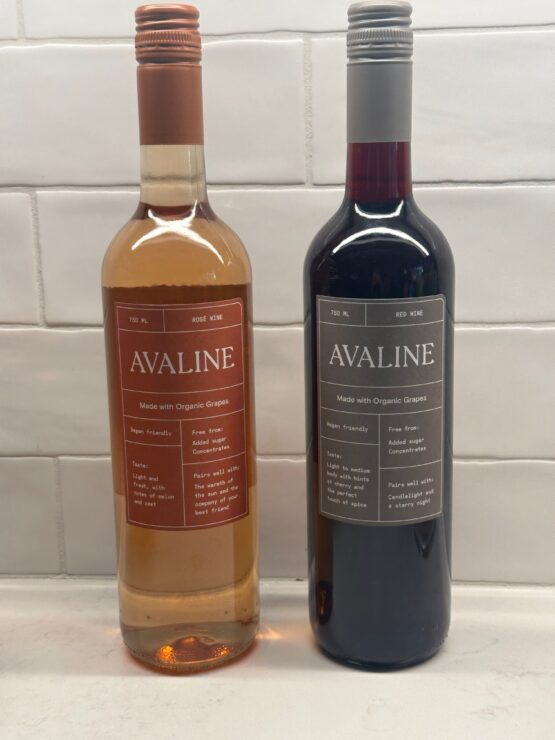
Tasting Aveline
We found the Avaline Rosé to be light-bodied, with strawberry and watermelon aromas and flavors. It was relatively low in acid and is not very complex. But we found it to be pleasant, a satisfying wine to sip on a sunny day. The wine is a blend of Grenache, Cinsault, Caladoc (a crossing of Grenache and Malbec), and Syrah, a classic Southern French Rosé blend.
The Avaline Red, a blend of Grenache, Syrah, Carignan, and Cinsault, is a lovely medium-bodied wine. It has notes of dark red fruit, soft tannins, and baking spices that liven the taste buds.
The prices for Avaline at Total Wine are $18 for both the rosé and the red. We all agreed that these are very good wines at this price point.
FitVine, Wine for the Active Lifestyle
With the catchphrase “We Crush Grapes You Crush Life,” FitVine advertises its wines as full-flavored, zero-sugar, and gluten-free. The label features the silhouette of an athletic-looking running man holding a glass of wine in one hand and a bunch of grapes in the other.
The FitVine website also touts low-tannin wines. Tannins don’t occur in white wines; in red wines, they are a natural result of their presence in wine skins. The quality of tannins is more critical than the amount of tannins. We found the tannins in the Cabernet Sauvignon to be very soft and pleasant.
The winery also stresses that the wines are low in sugar. They claim that an entire bottle of FitVine has less sugar than one 5 oz glass of the top 10 wine brands in the US.
FitVine’s marketing appeals to those seeking a healthy lifestyle. So how do the wines taste?
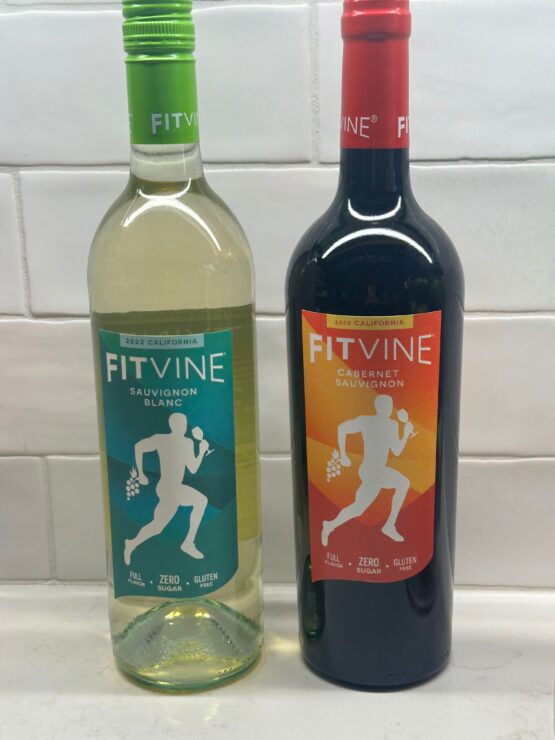
Tasting FitVine
The FitVine Sauvignon Blanc, purchased at Total Wine for $13.49, has aromas of citrus and gooseberries, typical of this grape. However, on the palate, the wine is one-note, with lots of lemon and little else. This wine did not appeal to any of us.
The FitVine Cabernet Sauvignon offers soft tannins and a medium body. The flavor profile features sweet red cherries, a touch of vanilla, spices, and a pleasant, lingering finish. At $12.29 a bottle, while not overly complex, offers much, and we found it enjoyable.
Live Your Best Life Wines
My Total Wine salesperson alerted me to the LYBL brand. The name is an acronym for Live Your Best Life. Their Cabernet Sauvignon is made from California sustainably farmed grapes. It’s vegan-friendly and gluten-free.

LYBL Cabernet Sauvignon has less alcohol and fewer calories than most California cabs. ©Terry Nozick
This light-bodied Cab has just 9 percent alcohol and 85 calories per 5-ounce glass. The alcohol is well below most California Cabs, which usually weigh in at between 14 percent and 15 percent and would run about 125 calories per glass. According to a product sheet I found online, LYBL uses a proprietary process that gently pulls alcohol from the wine, leaving a reduced alcohol product that retains its full flavor.
Tasting LYBL
Our tasting revealed this wine to be highly metallic on the palate, and lacking in any defined fruit notes. Not exactly full-flavored, as their advertising suggests. For $15 at Total Wine, this wine was just not pleasing at all.
Transparency Matters
Like many industries, the wine industry is going through tough times. According to The Wine Institute, wine consumption is down considerably in the US. Wine consumption has dropped nearly 19 percent, from 3.12 gallons per person in 2020 to 2.54 gallons in 2024. That’s a big decline.
According to the Silicon Valley Bank 2025 Wine Report, factors driving this steep drop include the diminishing of the wine-friendly Boomer population. Additionally, there is a more general change in attitude toward alcohol. No- and low-alcohol products, especially among younger drinkers, are the preference.
To entice the health-conscious younger generations, many wine producers are using targeted advertising, as discussed in this article.
“What truly matters is transparency,” says Matthew Lapides, regional manager of Trinchero Family Estates Heritage Collection. “I’d love to see more wineries include ingredient lists and share details about their viticultural practices.”
He notes Bravium as one example in his company’s wine portfolio. Owner/winemaker Derek Rohlffs sources grapes from regenerative-farmed vineyards. He asserts that this practice not only produces better fruit but also supports the environment and the long-term health of the vineyard. He adds that Bravium prints ingredient labels on every bottle.
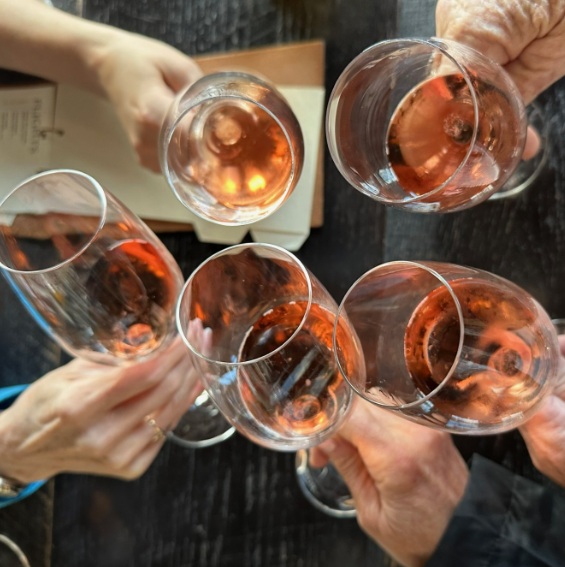
On the other hand, Sheila Donohue notes, “Those of us in the industry can’t say that wine is healthy, since it has alcohol. However, in the context of a healthy lifestyle, wine can contribute to a happier life by bringing people together. It also allows us to learn and experience different places around the world.”
As a Boomer who loves good wine, I enjoy seeking out artisan bottles from around the world. If wine is made with care and does no harm to humans and to the planet, that’s an added bonus.
You might also enjoy:
Sonoma County Wine Touring: Fogged In and Digging the Vibe
Discover Georgia’s Timeless Hospitality: Wine, Food, and Culture in the Caucasus

